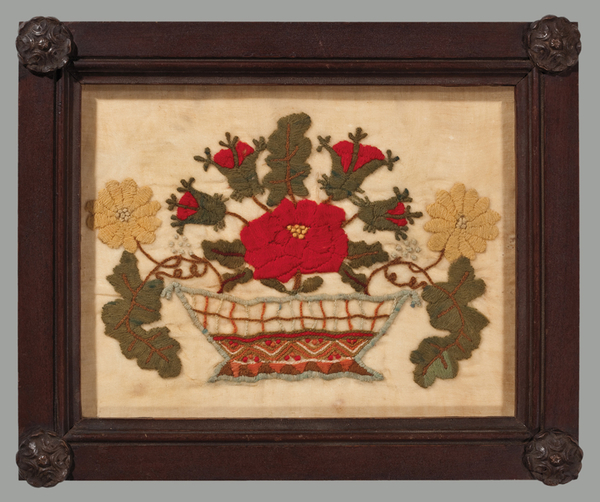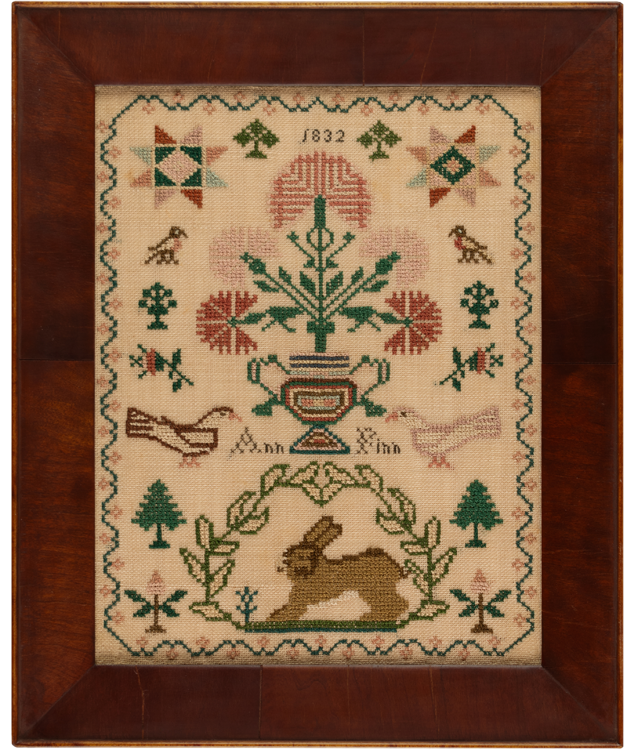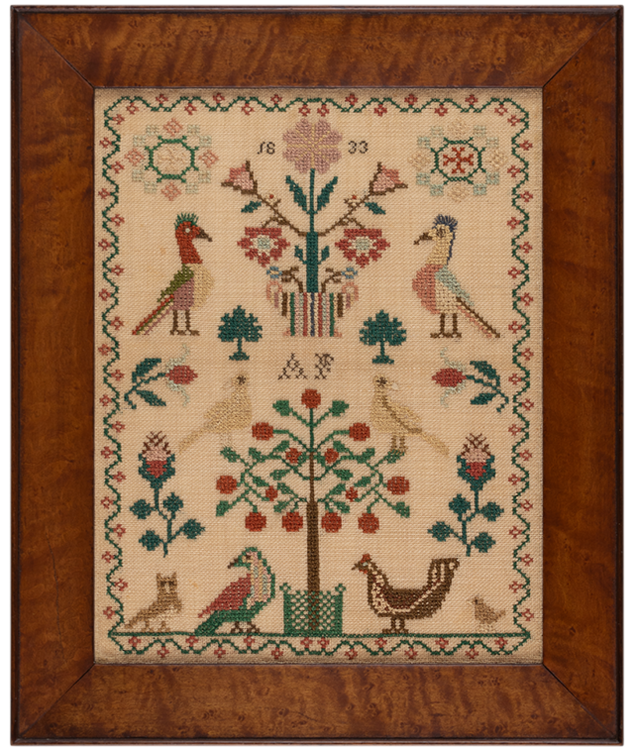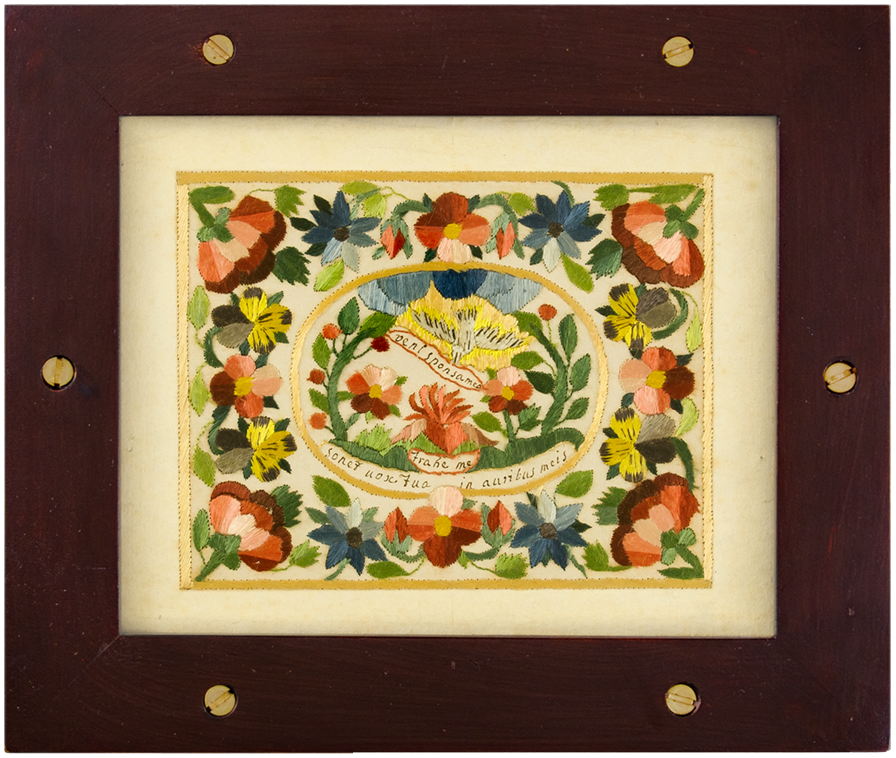Lydia Vose Gregory
Concord, Massachusetts, 1808
Lydia Vose Gregory

This delightful little sampler presents alphabets, numbers and a listing of vowels, embellished with satin-stitched flowers, chain stitched vine and satin-stitched edging. The samplermaker was Lydia Vose Gregory, age 9 in 1808 and living in Concord, Massachusetts. She was born on June 21, 1799, the only child of Marshall and Grace (Vose) Gregory. Her maternal ancestry reaches back to Robert Vose, of Lancashire, England, who was in Dorchester, Massachusetts by 1654, when he purchased about 500 acres of land. Much information about the family is published in Robert Vose and His Descendants compiled by Ellen F. Vose (Boston, Massachusetts, 1932). Lydia’s grandfather, Joshua Vose (1742-1775), lived in Milton and was a cordwainer and tax collector for the town. He was a private in Capt. Ebenezer’s Company, when they responded to the Lexington Alarm.
In 1821, Lydia married Darius Meriam, a Concord wheelwright, on May 8, 1821, and they became the parents of three sons. The Meriam family was a prominent one as well; the Meriam House, built in 1705 at the junction of Lexington and Bedford Roads and still standing today, features in the history of the Revolutionary War.
Lydia died at age 38 and her sampler descended five generations in the family, as a note from the family that accompanies the sampler indicates.
The sampler is in excellent condition worked in silk on linen, conservation mounted into a 19th century gilt frame.














